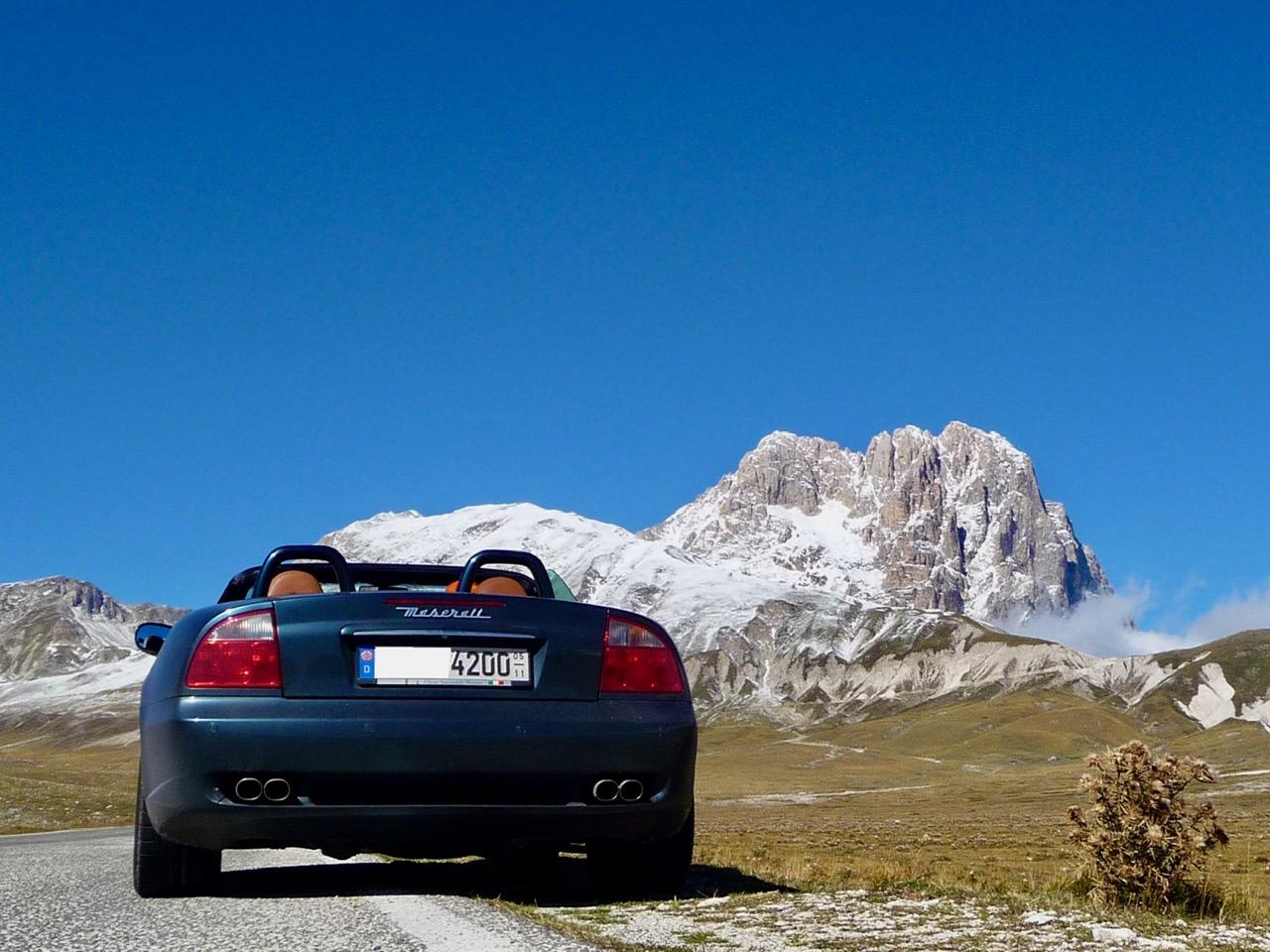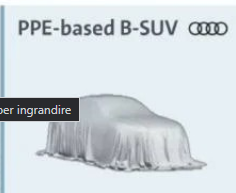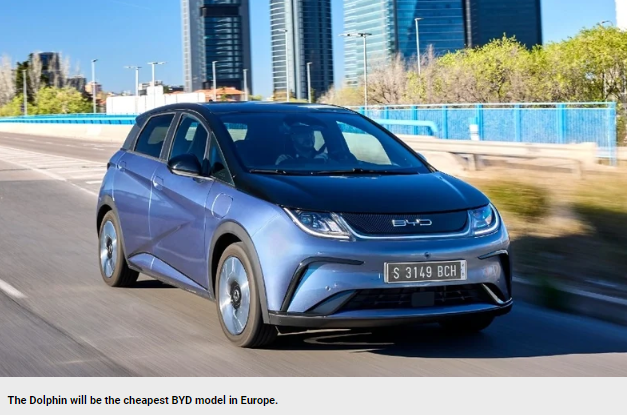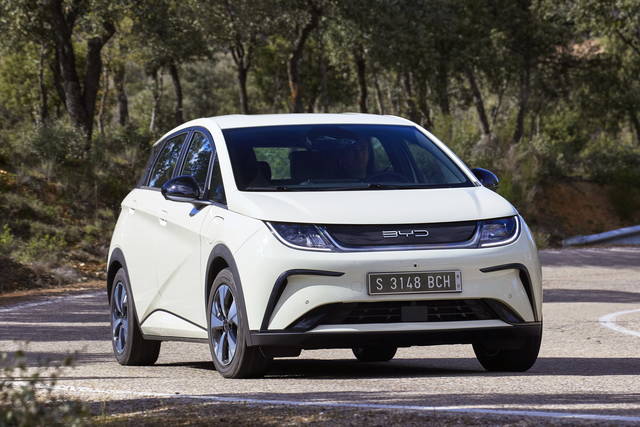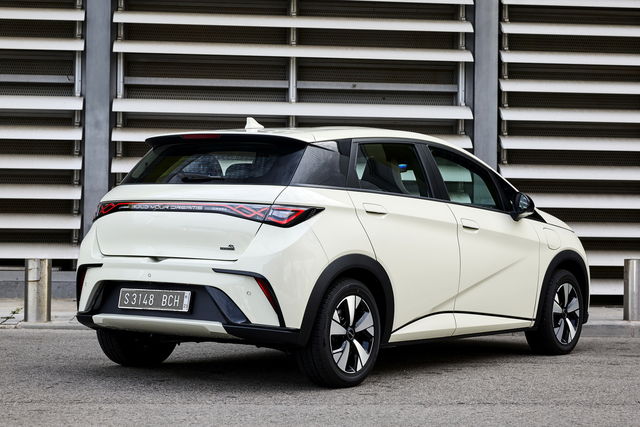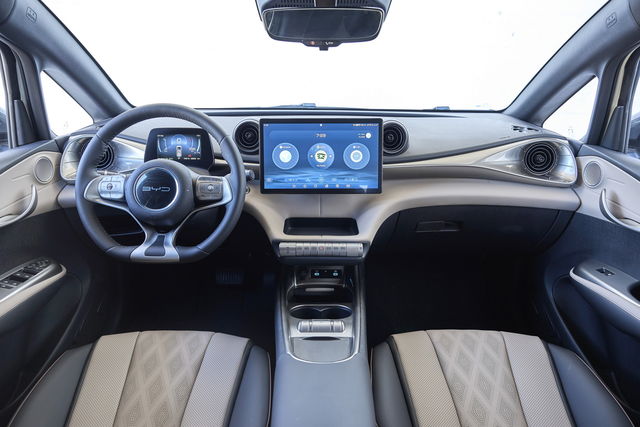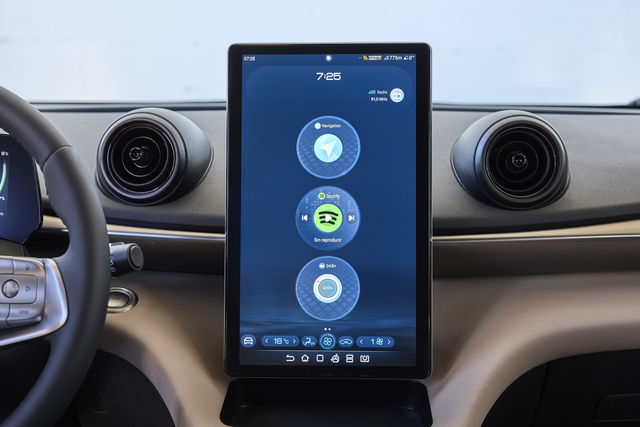-
Numero contenuti pubblicati
14761 -
Iscritto il
-
Ultima visita
-
Giorni Massima Popolarità
71
Tipo di contenuto
Forum
Galleria
Calendario
Download
Articoli del sito
Store
Blog
Tutti i contenuti di 4200blu
-
Per i mercati di partenza il segmento C e molto piu grande e piu rimunerativo....
- 29 risposte
-
- byd
- buildyourdreams
-
(e 3 altri in più)
Taggato come:
-
Altra riduzione dei prezzi per la Tesla 3 in Germania (e anche per la Y), la piccola 3 adesso costa 41.990.-
-
Wey Gaoshan......... The Wey Gaoshan is a high-end MPV from the Great Wall Motor. It was exposed by the Chinese MIIT with a plug-in hybrid system and up to 150 km of pure electric range. Later, Wey officially unveiled this vehicle. dimensions of 5045/1960/1900 mm and a wheelbase of 3085 mm Aside from a controversial exterior, the Wey Gaoshan is a really exciting MPV. It is equipped with a plug-in hybrid system. It comprises a 1.5-liter ICE for 156 hp. As for the electric motor, its power output has yet to be revealed. But we know quite a lot of information about its battery. It is ternary (NMC) manufactured by SVOLT. It is a well-known company that will supply batteries to Stellantis in 2025. Back to the Gaoshan’s battery, its capacity reaches 37.96 kWh. With it on board, it can run up to 150 km on a single charge.
-
Testing of the new Porsche Cayenne reaches the home straight https://www.msn.com/en-us/autos/news/testing-of-the-new-porsche-cayenne-reaches-the-home-straight/vi-AA17gV3z
- 65 risposte
-
- cayenne 2022
- cayenne facelift spy
- (e 5 altri in più)
-
...se non succede qualcosa straordinario (geopolitico, finanziario globale ecc.) poi molto probabile 2023 diventera un all time high per una serie 7.
- 184 risposte
-
- 2
-

-
...una evoluzione della gamma ice non ci sara, le ice fanno le loro ultime contorsioni....
- 184 risposte
-
- 1
-

-
In Germania no, la segmento B sono "Kleinwagen". Ma in Audi la "B" sta per le generazione della Audi 80 / A4. Ma neanche questa segmento, gia esistente con la Q4, e basata sulla PPE ma invece sulla MEB.
-
Ma forse la B sta semplicimente per batteria - basata su PPE e la data 2024 per me significa la Q6, sorella della Macan-bev.
-
Non ho mai sentito cosi, ma non significa che non potrebbe essere.
-
Non credo che un B-Suv come macchina del segmento B sara basata su PPE, la piattaforma sviluppato da Porsche per auto dei clesse superiore. UnSuv Seg-B sara sicuramente basata sul MEB accorciata, ma quella debutera non prima di 2025 con la Id2.
-
EPA proposes its strictest-ever vehicle emissions limits for 2027-32 The plan could lead to EVs making up 67% of new light-duty vehicle sales and 46% of medium-duty vehicle sales in the 2032 model year, according to EPA projections. April 12, 2023 WASHINGTON — The EPA on Wednesday unveiled its strictest-ever limits on vehicle tailpipe pollution, a regulatory move that could spur greater sales of electric vehicles in the U.S. The proposed vehicle emissions standards cover the 2027-32 model years for light- and medium-duty vehicles. Coupled with federal incentives and other investments, they could accelerate the ongoing transition to EVs while clamping down on harmful pollutants in the transportation sector, the nation's largest source of greenhouse gas emissions and a main cause of air pollution. Under the proposal, EVs could make up 67 percent of new light-duty vehicle sales and 46 percent of medium-duty vehicle sales in the 2032 model year, according to EPA projections. "By proposing the most ambitious pollution standards ever for cars and trucks, we are delivering on the Biden-Harris administration's promise to protect people and the planet, securing critical reductions in dangerous air and climate pollution and ensuring significant economic benefits like lower fuel and maintenance costs for families," EPA Administrator Michael Regan said in a statement. "These ambitious standards are readily achievable thanks to President Biden's 'Investing in America' agenda, which is already driving historic progress to build more American-made electric cars and secure America's global competitiveness," he added. The EPA said its proposed standards are expected to save consumers $12,000 over the lifetime of a light-duty vehicle compared with a vehicle not subject to the new tailpipe pollution limits. For light-duty vehicles, the emissions standards would increase in stringency each year, resulting in a fleetwide average greenhouse gas emissions target of 82 grams of carbon dioxide per mile in the 2032 model year. For medium-duty vehicles, the standards also increase in stringency and are projected to result in an average target of 275 grams of CO2 per mile by the 2032 model year. The proposal would require a combined fleet year-over-year CO2 reduction of 18 percent in the 2027 model year; 13 percent in 2028; 15 percent in 2029; 8 percent in 2030; 9 percent in 2031; and 11 percent in 2032. That equates to a combined fleet average year-over-year CO2 reduction from the 2027 to 2032 model years of 13 percent. In comparison, under the rule for 2023-26 model-year vehicles, emissions standards increase in stringency between about 5 and 10 percent each model year. The standards mandate an industrywide target of 161 grams of carbon dioxide per mile — or 40 mpg on window stickers — by the 2026 model year. The EPA said its proposed light-duty standards in the 2032 model year could lead to a 56 percent reduction in projected fleetwide average greenhouse gas emissions target levels compared with the 2026 model year standards. For the medium-duty standards, the reduction is projected to be 44 percent. The proposal for light- and medium-duty vehicles also is expected to prevent 7.3 billion tons of carbon dioxide emissions through 2055, "equivalent to eliminating all greenhouse gas emissions from the entire current U.S. transportation sector for four years," the agency said. While the light-duty standards continue to be based on vehicle footprint, the EPA is proposing to revise the vehicle footprint curves "to flatten the slope of each curve and to narrow the numerical stringency difference between the car and truck curves," according to the proposal. It is also proposing to revise certain compliance flexibilities, including fully phasing out the off-cycle credits program — which allows automakers emissions credits for technologies such as stop-start engines and high-efficiency headlamps — by the 2031 model year and limiting eligibility to internal combustion engine vehicles. Also on Wednesday, the EPA issued its Phase 3 proposed greenhouse gas standards for heavy-duty vocational vehicles, such as delivery trucks and school buses, that complement criteria pollutant standards finalized in December. That rule covers the 2028-32 model years and revises certain standards for the 2027 model year that were established in a Phase 2 rule. Through 2055, the EPA projects the proposed standards for light-, medium- and heavy-duty vehicles would prevent nearly 10 billion tons of CO2 emissions. (AN NA)
- 5169 risposte
-
- 1
-

-
- transizione ecologica
- bev
-
(e 2 altri in più)
Taggato come:
-
SITGES, Spain – Chinese EV maker BYD will launch the Dolphin compact hatchback by the end of the year in Europe at a base price of 30,000 euros ($33,000) in an effort to tap the growing market for low-cost electric vehicles. BYD will also launch a midsize sedan, the Seal, by the end of this year to complete its full-electric only range in Europe, which now includes the Atto 3 compact crossover, the Han large sedan and the Tang large SUV. The automaker is expanding in Europe, and says it will sell cars in "all major markets" by the end of the first half of this year. Sales started first in Norway, Sweden and the Benelux countries, followed by Germany, the U.K. and France. Spain was added last month, with sales to start in Italy in the coming months, BYD Europe head of sales Pere Brugal said at an event in Sitges, Spain. The Dolphin is likely to be the most popular BYD model with European customers, Brugal said, adding that it will probably sell best in Southern Europe, while a lack of all-wheel-drive may limit its appeal in Nordic countries. It will also be the cheapest BYD model in Europe. A version with a 45 kilowatt-hour battery will start at 30,000 euros, while a model with a 60 kWh battery will also be available, with a top price of 38,000 euros. The bigger battery will offer a range of 427 km (265 miles) and will be first to market. These prices are relatively similar to those of the MG4, a Chinese-built compact crossover from SAIC that sold 4,972 units in Europe in the first two months of 2023, according to Dataforce. Low-cost EV market grows Lower-cost EVs are mostly coming from Chinese brands or China-built models such as the Dacia Spring. Great Wall Motors’ Ora, another Chinese brand, has launched the compact Funky Cat in Germany and is planning to expand to other European markets. At the same time, Citroen has cut the price of its e-C4 compact as competition heats up. Brugal did not give a sales target for BYD in Europe. According to Dataforce, BYD sold 4,040 cars in the region last year, nearly four times more than the 1,068 sold in 2021. BYD sold 512 cars in Europe this year through February, compared with 186 in the same period in 2022. Sales of the Dolphin have already started in China, but the European version will be 190 mm longer, at 4,290 mm, with a 2,700 mm wheelbase. It is on the same BYD 3.0 platform as the Atto 3. The Seal, which is 4,800 mm long, is a potential rival of the Tesla Model 3, which is about 4,700 mm long. It has an 82 kWh battery that offers a range of 570 km. It was revealed in Europe at the Paris auto show last October. Brugal said the Dolphin will be BYD’s entry model in Europe, although the brand sells several smaller models in China. The Dolphin and the Seal feature a version of BYD’s "blade" battery technology used in the Atto3. BYD makes its own batteries using cheaper lithium iron phosphate chemistry, which generally offers more durability and safety, but less power density, than other lithium-ion technologies. According to BYD, the Seal is the first vehicle to use what it calls cell-to-body technology, which fully integrates the BYD blade battery into the vehicle structure to increase safety. The battery structure is 10 mm thinner and slightly lighter than existing technology, helping improve the car’s aerodynamics, said Veijie Zhang, BYD’s head of R&D in Europe. BYD expects the Dolphin (shown) to be its best-selling model in Europe, although a lack of all-wheel-drive could limit its appeal in Nordic countries. PHEVs not ruled out for Europe Brugal said selling plug-in hybrid models in Europe "could be an option" for BYD, especially in countries with less charging infrastructure. Plug-in hybrids account for approximately half of BYD’s electrified vehicle sales in China, with the remaining 50 percent full-electric, he said. Last year, BYD sold about 1.86 million plug-in and full-electric cars, nearly all in China. As of 2022, BYD will build only full-EVs and plug-in hybrids. BYD will expand sales in the second quarter to Italy, Ireland, Portugal, Iceland and Finland. The automaker plans to double the number of European sales points to about 200 by the end of this year, and to more than 500 by the end of 2024. BYD employs two different sales models in Europe: In the Netherlands, Belgium and Sweden it follows what it calls a "dealer plus" model, where a single third-party importer manages the business in the country. In the U.K., France, Spain and Italy, BYD is setting up national sales companies that will create a dealer network. Contracts with dealers will be on a traditional retail model rather than a direct-sales agency model. (ANE)
- 29 risposte
-
- 1
-

-
- byd
- buildyourdreams
-
(e 3 altri in più)
Taggato come:
-
JAC Yiwei 3 The size of Yiwei 3 is 4025/1770/1560mm, with a 2620mm wheelbase. Overall, the Yiwei 3 looks cute and has a retro vibe, and will offer a variety of body colors including white, beige, gray, green, and purple. It is built on JAC’s DI platform with JAC’s self-developed cellular battery and control safety system. Moreover, it is equipped with a 9-in-1 powertrain. Power comes from a single motor, which has high- and low-power versions with a maximum power of 70kW and 100kW, respectively. Additionally, the battery pack is a lithium iron phosphate battery with 46 series of large cylindrical cells. The top speed is 150km/h. The car is expected to offer three cruising range options: 305km, 405km, and 505km. The new brand will target the 70,000 – 150,000 RMB (10,100 – 21,800 USD) electric vehicle market segment, aiming towards consumer groups between 20 – 35 years old. Furthermore, in the next five years, Yiwei plans to launch four new models based on its new DI platform, namely Yiwei 5, Yiwei X5, Yiwei 3, and Yiwei X3. (CNC)
-
almeno con la mia browser il testo sopra non e leggibile... Alfa Romeo celebra i 100 anni dell’iconico Quadrifoglio presentando le nuove Giulia e Stelvio Quadrifoglio con l’edizione di lancio “Quadrifoglio 100° Anniversario” – edizione limitata, prodotta in sole 100 esclusive unità per modello. Massima espressione di raffinatezza tecnica e tecnologia: motore 2.9 V6 potenziato a 520 CV e differenziale autobloccante meccanico per un’esperienza di guida unica. Tanta tecnologia grazie ai nuovi proiettori a matrice full LED adattivi ed al nuovo quadro strumenti digitale dallo storico design “a cannocchiale”. Molti i contenuti distintivi che la rendono esclusiva: nuovi badge celebrativi disegnati dal Centro Stile Alfa Romeo e nuove pinze freno color oro. La calandra e le calotte specchio sono in carbonio a vista. Negli interni, nuove cuciture a vista color oro e badge celebrativo su plancia impreziosiscono un ambiente sportivo dominato dal carbonio, con nuova finitura 3D. Il 15 aprile 1923 fu il giorno esatto in cui il leggendario Quadrifoglio debuttò sulla versione “Corsa” della RL del pilota Ugo Sivocci, portandolo alla vittoria della XIV Edizione della Targa Florio. Da allora il Quadrifoglio diventa simbolo del DNA di Alfa Romeo - Nobile Sportività Italiana - e identifica le più performanti realizzazioni del marchio; non solo quelle impegnate nei circuiti di gara ma anche le più potenti ed esclusive vetture stradali. In occasione del centenario, per svelare le nuove Quadrifoglio, Alfa Romeo torna nei luoghi della Targa Florio, dove il mito ebbe inizio: la Sicilia fa da sfondo ad uno shooting suggestivo che, oltre a raccontare la tradizione, enfatizza la “Grande Bellezza” italiana. Il tributo di Alfa Romeo alla leggenda del Quadrifoglio: 100 esclusive vetture celebrate laddove il mito ebbe inizio, in Sicilia, nei luoghi della Targa Florio. Il 15 aprile 2023 ricorrono 100 anni da quando il fortunato Quadrifoglio, simbolo indelebile del marchio Alfa Romeo, debuttò sulla versione “Corsa” della RL durante la XIV edizione della Targa Florio. Proprio in occasione di questa memorabile ricorrenza, Alfa Romeo presenta le nuove Giulia e Stelvio Quadrifoglio, con l’esclusiva versione celebrativa “Quadrifoglio 100° Anniversario” edizione limitata a sole 100 unità, sia per Giulia che per Stelvio, risultato di una centenaria ricerca dell’eccellenza tecnica applicata alle competizioni e alle vetture di produzione. Iconicità, purezza tecnica e tecnologia si fondono posizionandole ai vertici dei rispettivi segmenti: Best in Class per handling e rapporto peso-potenza per un’esperienza di guida unica, diretta e coinvolgente da vera Alfa Romeo. Tante le novità: badge celebrativi, esclusive caratterizzazioni e tanta tecnologia grazie ai nuovi proiettori a matrice full LED Adattivi ed il nuovo quadro strumenti totalmente digitale impreziosito dallo storico design “a cannocchiale”. Per festeggiare il secolo di pura sportività, il Quadrifoglio torna nelle terre natie: la Sicilia, infatti, è lo sfondo scelto da Alfa Romeo per uno shooting celebrativo che, oltre a raccontare la tradizione, enfatizza la “Grande Bellezza” italiana e il “Made in Italy”. Un viaggio che, dopo cento anni, non termina ma si reinventa, proiettando le due Quadrifoglio in un futuro lucente che strizza l’occhio ai successi del passato. Alle origini del mito Il leggendario Quadrifoglio, simbolo di nobile sportività italiana, identifica da sempre le più performanti realizzazioni del marchio; non solo quelle impegnate nei circuiti di gara, ma anche le più potenti ed esclusive vetture stradali. In occasione del centenario, viene riproposto in versione celebrativa: con una rilettura in chiave moderna, il Centro Stile Alfa Romeo proietta difatti lo storico logo nel futuro del marchio, preservandone la solidità e l’eleganza ed evolvendone il punto colore. Un tocco cromatico contemporaneo, che rievoca gloriose vetture e celebri vittorie sportive del marchio entrate nell’immaginario collettivo. Il Quadrifoglio ha accompagnato la storia sportiva e industriale di Alfa Romeo fin dagli albori. Nasce, difatti, il 15 aprile 1923, in occasione della XIV edizione di una delle più antiche corse automobilistiche al mondo, la Targa Florio, evento mondano che, all’inizio del secolo scorso, una volta l’anno trasformava la Sicilia in uno dei più rinomati “salotti” europei. Stimolante ma fortemente impegnativa, dal punto di vista tecnico, la corsa rappresentava uno dei traguardi più significativi del tempo per un pilota, capace di rilanciare nel mercato particolari modelli automobilistici e interi marchi. Per questo motivo, nel 1923 Alfa Romeo attribuì grande importanza alla corsa siciliana, sviluppando una versione apposita della RL e ingaggiando piloti di talento. Sarà Ugo Sivocci, importante pilota del tempo, a portare a casa la vittoria, grazie alle sue capacità e ad una serie di eventi fortunati che renderanno ancor più significativa la scelta del Quadrifoglio ad emblema di sportività sui cofani delle vetture da corsa. Con questo trionfo, Alfa Romeo viene catapultata nell’olimpo dei costruttori, legando inesorabilmente il simbolo del Quadrifoglio a vetture leggendarie del marchio e diede il là ad una lunga serie di successi ottenuti stoicamente da piloti indimenticabili. Dal primo Campionato del mondo per vetture Grand Prix del 1925, passando per la Mille Miglia, la Targa Florio e la “24 ore di Le Mans”, da allora il marchio domina il panorama mondiale delle competizioni sportive. Il fortunato simbolo però inizia ben presto a contraddistinguere anche le più esclusive vetture stradali. È infatti con la Giulia Sprint GT Veloce che viene per la prima volta applicata la mostrina smaltata con il Quadrifoglio su una vettura stradale. Inizia così una tradizione che prosegue ancora oggi, caratterizzando le versioni più potenti della gamma, destinate a un pubblico di intenditori amanti della guida sportiva. Una serie limitata a 100 unità con tanti contenuti esclusivi. Tanta tecnologia, ancora più potenza con 520hp e massima raffinatezza tecnica grazie al differenziale autobloccante meccanico Giulia e Stelvio “Quadrifoglio 100° Anniversario” sono il risultato di una centenaria ricerca dell’eccellenza tecnica applicata alle competizioni e alle vetture di produzione. Il motore 2.9 V6 è stato potenziato a 520 CV (per Europa, UK e Cina) ed è abbinato al differenziale autobloccante meccanico, contenuto che esordisce su questa serie speciale di lancio. Si tratta di un importante accorgimento tecnico che, grazie ad una messa a punto specifica derivante dall’esperienza progettuale di Giulia GTA, contribuisce a migliorare il comportamento della vettura e la motricità, ottimizzando il trasferimento di coppia, aumentando stabilità, agilità e velocità in curva. Dinamica di guida best in class, risultato della sorprendente leggerezza, dovuta all’utilizzo di materiali ultraleggeri come l’alluminio per il motore e la fibra di carbonio per l’albero di trasmissione, cofano, spoiler e minigonne. Su Giulia, rimane l’aerodinamica attiva con lo splitter anteriore in carbonio: quando attivato controlla la qualità di flusso d’aria che passa sotto il veicolo, aumentando stabilità e prestazioni. Infine, il sistema di scarico Akrapovich, che conferisce allo scarico un sound inconfondibile. Forte personalità negli esterni dove Giulia e Stelvio rinnovano il proprio sguardo in continuità con il family feeling di gamma caratterizzato dai proiettori “3+3”, con nuovi fari Full-LED Matrix adattivi che offrono un fascio di guida antiabbagliante e adattabile per un’illuminazione ottimale in ogni condizione, garantendo risparmio energetico, un elevato miglioramento della sicurezza e un minore affaticamento degli occhi. Cerchi in lega sportivi bruniti a 5 fori da 19’’ per la Giulia, e da 21’’ per Stelvio con le nuove ed esclusive pinze freno color oro. La stessa preziosa tinta contraddistingue l’emblema celebrativo dei 100 anni del Quadrifoglio, posizionato sul parafango di entrambe le vetture. A donare ancora più sportività, sia per Giulia che per Stelvio, la calandra e le calotte specchio sono in carbonio a vista. Tre le livree disponibili: Rosso Etna, Verde Montreal e Nero Vulcano. La stessa caratterizzazione sportiva si ritrova nell’ambiente interno dove prevale l’esclusivo binomio pelle nera ed alcantara, impreziosito dalle nuove ed esclusive cuciture dorate a vista e dall’innovativa finitura in 3D in vero carbonio per il cruscotto, il tunnel centrale e il pannello delle porte. Sulla plancia domina l’impuntura del celebrativo numero “100” accostato al Quadrifoglio sempre nel caratterizzante color oro. Il volante è rivestito in pelle ed Alcantara con cuciture nere e inserti in fibra di carbonio. Dall’estetica esclusiva alla tecnologia e alla connettività di bordo che, per definizione, sono al servizio di un’esperienza di guida tipicamente Alfa Romeo. Lo dimostra il nuovo quadro strumenti, caratterizzato dallo storico design “a cannocchiale”, dove campeggia l’inedito schermo TFT da 12,3” - totalmente digitale - da cui accedere a tutte le informazioni sulla vettura e ai parametri relativi alle tecnologie di guida autonoma. Su Quadrifoglio, oltre ai tre layout disponibili su tutta la gamma Alfa Romeo, Evolved Relax and Heritage, debutta l’esclusiva configurazione “Race” Il layout “Race” raccoglie nella schermata centrale le informazioni fondamentali che ogni pilota vuole avere sotto controllo: contagiri, tachimetro e shiftlight per la guida manuale. Il layout è personalizzabile disponendo nei quadranti laterali ulteriori informazioni, tra cui quelle istantanee relative alle prestazioni. Torino, 13 aprile, 2023
- 56 risposte
-
- 2
-

-
- alfa romeo ufficiale
- my23
- (e 11 altri in più)
-

MINI All Electric JCW 2025 - Prj. J01 BEV (Leak)
4200blu ha risposto a sonicwp7 in Scoops and Rumors
...non sembra...e un clone cinese..... ...non sembra...e un clone cinese.....- 388 risposte
-
- 4
-

-

-

-

MINI All Electric JCW 2025 - Prj. J01 BEV (Leak)
4200blu ha risposto a sonicwp7 in Scoops and Rumors
...come gia scritto una volta, riduzione dei costi in produzione e logistica e quindi miglioramento del footprint CO2 (pezzi che non devi trasportare non creano CO2). Il CO2 in futuro non e solo un tema per lo scarico ma anche per tutto il life cicle del auto.- 388 risposte
-
- 4
-

-

MINI All Electric JCW 2025 - Prj. J01 BEV (Leak)
4200blu ha risposto a sonicwp7 in Scoops and Rumors
...si si...in 256 colori diversi.....scherzo 😝- 388 risposte
-
- 1
-

-
XM Label Red The BMW XM Label Red responds to the needs and desires of a global target group of individualists – customers with a taste for extrovert lifestyle and a passion for ultimate performance in a car reaching beyond traditional conventions. Production will begin in August 2023 at BMW Group Plant Spartanburg in the USA. Scheduled for the same timeframe is an exclusive edition of the range-topping model limited to 500 examples and featuring an exterior paint finish in BMW Individual Frozen Carbon Black metallic. The BMW XM Label Red will celebrate its world premiere at the Auto Shanghai international motor show in April 2023. China is one of the most important sales regions for the BMW XM Label Red, alongside the USA and the Middle East. It can be ordered from dealers from 28 April 2023. M HYBRID system with top-level and precisely judged performance. The M HYBRID system in the BMW XM Label Red demonstrates the intoxicating effect of drive system electrification in high-performance models from BMW M GmbH in impressive style. The precisely honed interplay of the electric motor and V8 engine ensures an instantaneous delivery of power that then builds emphatically and continues unabated into the highest reaches of the rev range. This combination of combustion engine and electric motor matches the drive concept of the new BMW M Hybrid V8 endurance racing car, which made a successful debut in the 24 Hours of Daytona race in the North American IMSA series this year and is set to line up in events including the 24 Hours of Le Mans in 2024. With a system output increased to 550 kW/748 hp, the new top-of-the-line model outperforms the standard BMW XM produced since December 2022 by 70 kW/95 hp. System torque is up by 200 Nm (147 lb-ft) and now peaks at 1,000 Nm (737 lb-ft). Power is channelled to the road by the M xDrive all-wheel-drive system. In conjunction with a model-specific composition of chassis technology and fast-acting, high-precision powertrain and chassis control, this creates a unique performance experience with dynamism and agility at a whole new level. V8 engine with cutting-edge M TwinPower Turbo technology and classical high-revving character. The M HYBRID system of the BMW XM Label Red blends the future-focused virtues of electrification with the traditional qualities of a high-revving eight-cylinder combustion engine with M TwinPower Turbo technology. The latest generation of the V8 stands out with its extremely rapid power delivery, increased efficiency and minimised emissions. As well as a cross-bank exhaust manifold, it also features a reinforced crankshaft drive, turbocharging with an electrically controlled blow-off valve, upgraded oil supply and optimised oil separation. In the BMW XM Label Red, the V8 makes an even greater contribution to the system output generated in tandem with the electric motor. It produces its maximum output of 430 kW/585 hp at 5,600 rpm. Peak torque is 750 Nm (553 lb-ft) – an increase of 100 Nm (74 lb-ft) over the version of the engine in the standard BMW XM – and is on tap across an extremely wide rev band from 1,800 to 5,400 rpm. With two electronically controlled and continuously adjustable flaps, the sports exhaust system of the BMW XM Label Red provides an emotionally rich accompaniment to the engine’s power delivery with a vibrancy and energy not normally associated with an eight-cylinder unit. The engine sound therefore has a very distinctive quality, as do the two pairs of dual tailpipes, with the individual pipes arranged one above the other. Instantaneous power delivery: electric motor with innovative pre-gearing stage. Like the V8 engine, the electric motor of the M HYBRID system also employs innovative technology to deliver a noticeable increase in pulling power. The permanently excited synchronous motor is integrated into the eight-speed M Steptronic transmission together with its power electronics and, in the now familiar style of electric motors, responds to just slight movements of the accelerator with instantaneous power delivery. The electric motor contributes up to 145 kW/197 hp to the maximum system output of the BMW XM Label Red and develops nominal torque of 280 Nm (206 lb-ft). A pre-gearing stage patented by BMW is used to increase the torque produced by the motor to an effective maximum of 450 Nm (332 lb-ft) at the transmission input for the motor. In this way, the compact motor is able to provide the sort of torque boost that could normally only be achieved using a far larger and heavier unit. The improved build-up of power resulting from the pre-gearing stage between the electric motor’s rotor and the transmission’s input shaft can be clearly felt, both when accelerating off the line and when putting in a quick burst of speed. Combined with the optimised power delivery of the V8 engine and its high-revving character, this produces performance of rare authority and composure. The BMW XM Label Red needs just 3.8 seconds to sprint from 0 to 100 km/h (62 mph). Its top speed is electronically limited to 250 km/h (155 mph), but rises to 290 km/h (180 mph) on cars with the optional M Driver’s Package. As well as providing an electric boost effect under acceleration, the electric motor also performs a supporting role under steady loads, helping to increase the efficiency of the combustion engine. This gives the BMW XM Label Red average petrol consumption of 1.7 – 1.6 litres per 100 kilometres (166.2 – 176.6 mpg imp) in the WLTP test cycle, combined electric power consumption of 34.5 – 33.0 kWh per 100 kilometres and CO2 emissions of 39 – 35 grams per kilometre. Powerful high-voltage battery, BMW IconicSounds Electric, Combined Charging Unit and predictive heat management. The motor draws its energy from a high-voltage lithium-ion battery integrated into the underbody area, which is a product of fifth-generation BMW eDrive technology. The lithium-ion battery stands out with its high energy density at a cell and battery pack level. It provides a constant flow of power across a wide temperature range and even under the heavy loads brought by a particularly sporty driving style. It has a usable energy content of 25.7 kWh. Together with the electric motor’s excellent efficiency and the system of intelligent energy management, this enables an electric range of 75 – 83 kilometres (47 – 52 miles) in the WLTP cycle. The BMW XM Label Red can therefore complete not only journeys around town but also cross-country routes locally emission-free and almost silently. The top speed achievable in pure electric mode is 140 km/h (87 mph). The power delivery of the electric motor also gains a soundtrack of its own, in the form of the BMW IconicSounds Electric developed as part of a collaboration between the BMW Group and film score composer Hans Zimmer. The Combined Charging Unit of the M HYBRID system enables AC charging at up to 7.4 kW. This means the high-voltage battery can be replenished from zero to 100 per cent charge in 4.25 hours. Predictive heat management reduces charging times by judiciously warming or cooling the battery. Supplied as standard are both the Flexible Fast Charger for use with domestic or industrial sockets and the charging cable Professional. This mode 3 cable for topping up at public charging stations can be kept in a suitably stylish and exclusive weekend-type bag and secured in the boot area using a crash-protective carabiner-belt combination. Supreme traction, captivating performance: M xDrive and M Sport differential. The M xDrive all-wheel-drive system channels the power generated by the combustion engine and electric motor between all four wheels precisely, quickly and as required at all times. The system has a rear-biased setup, which enhances the agility of the BMW XM Label Red and is particularly pronounced in 4WD Sport mode. When the DSC (Dynamic Stability Control) system has been fully disengaged, the traction-optimised 4WD Sand mode – conceived specifically for driving over dunes and similar surfaces – can be activated via the M Setup menu. Building on the work of the M xDrive system is an electronically controlled differential lock in the rear axle, which further enhances traction, agility and directional stability. The M Sport differential brings a need-based and fully variable distribution of drive torque between the left and right rear wheels. Model-specific chassis tuning, integrated transverse dynamics management. The most powerful road-legal BMW M car ever made impresses not only with the unique power delivery of its M HYBRID system, but also with the breadth of its driving attributes, which enthral and delight time after time. The BMW XM Label Red rises to every challenge with unshakable poise and assurance, whether demonstrating its manifestly sporty performance credentials, cruising along in leisurely fashion (with zero local emissions if desired), inviting its occupants to relax in comfort on long trips or venturing off road. The car’s sophisticated chassis technology gives it an extraordinary spread of attributes, from dynamism to long-distance comfort, and is adapted to the bespoke performance characteristics of the drive system with the precision for which BMW M models are renowned. Standard equipment for the BMW XM Label Red includes adaptive M suspension Professional – featuring electronically controlled dampers and active roll stabilisation with Active Roll Comfort to eliminate body roll on one side of the vehicle – and Integral Active Steering. The M Sport braking system comprises six-piston, fixed-calliper brakes at the front and single-piston, floating-calliper units at the rear. It teams with the latest-generation integrated braking system, which ensures the stopping power generated by recuperation and the friction brake is combined with great precision, and which also presents the driver with two pedal feel settings. Like the M xDrive all-wheel-drive system, the M Sport differential, active roll stabilisation and the steering’s control systems, the near-actuator wheel slip limitation tech integrated into the engine management and the Performance Control function are networked with the central transverse dynamics management. The integrated application of all powertrain and chassis systems together with the fine-tuning carried out on varying types of road – from urban driving to country roads and motorways – with the help of BMW M GmbH’s racing expertise has resulted in a well-resolved driving experience in every situation and with every configuration. Extroverted design with exclusive details. Stylistically as well as technically, the BMW XM Label Red takes the first model since the legendary BMW M1 to be conceived solely as a high-performance car from BMW M GmbH into even more exclusive territory. The muscular proportions of a dynamic Sports Activity Vehicle converge with an extrovert exterior design featuring large surfaces, clear lines and a front-end look reserved for luxury-class BMW models. And added to the mix here are design accents underscoring the singular character of the BMW XM Label Red as a car focused on achieving the highest peaks of performance. The distinguishing features of the performance-maximising XM variant include an accent band in Toronto Red metallic, although a black accent band also can be specified. The use of red also extends to the model badges and the wheel inserts. The BMW XM Label Red is fitted as standard with 21-inch light-alloy wheels. The surrounds for the BMW M kidney grille and diffuser elements come in Black high-gloss. The spectrum of exterior paint shades available for the new model comprises one solid and eight metallic variants. Customers can also choose from more than 50 BMW Individual special paint finishes, including the new BMW Individual Urban Green, BMW Individual Petrol Mica metallic, BMW Individual Anglesey Green metallic and BMW Individual Sepia metallic. The new BMW Individual Visualizer (at https://individual.bmw-m.com/) is available for the first time from the start of orders for the BMW XM Label Red to help customers with the paint selection process. The car is depicted extremely realistically in the paint finish selected by the customer against the backdrop of BMW M Town. Here, it can be viewed from various angles and with the aid of 360-degree video. The limited-edition variant of the BMW XM Label Red – only 500 examples of which will be released globally – maximises the exclusivity factor with even more expressive styling. Toronto Red metallic for the BMW M kidney grille surround and rear diffuser insert create additional design cues that combine with a body paint finish in BMW Individual Frozen Carbon Black metallic. The contrast of the gloss colour accents against shimmering matt surfaces ensures the exterior of the BMW XM Label Red has a particularly enthralling effect. A black/red colour scheme also brings a visually appealing and sporting flavour to the interior of the BMW XM Label Red. The distinctive three-dimensional headliner and the trim for the body pillars have black surfaces. Red is used to bring an extra sense of exclusivity to the diamond-shaped upper sections of the backrests and the integrated head restraints of the seats for the driver and front passenger and the outer rear seats. This is complemented by red contrast stitching for the black surfaces of the seats, instrument panel, door trim and centre console, and the likewise red accents for the air vents. Among the other exclusive features of the BMW XM Label Red interior are a red “XM” badge below the control display and an interior trim strip in Carbon Fibre satin effect with red and blue accent threads highlighting this as an M car. Inside the limited-edition variant of the Label Red, customers will find a plaque below the control display reading “1 of 500”. Sports car cockpit with BMW Curved Display; M Lounge in the rear. M multifunction seats, knee pads, M-specific content on the BMW Curved Display and the standard-fitted BMW head-up display, the signature M gear selector lever and an M-specific control panel on the centre console are the headline features of a sports car-style cockpit optimised to deliver a richly engaging performance experience on board. The M Hybrid button is used to select the desired operating mode for the drive system, while the Setup button provides direct access to the configuration of the powertrain, chassis, steering, braking system and M xDrive, as well as allowing the level of brake energy recuperation to be adjusted. The M leather steering wheel has trim elements in Black Chrome, plus M buttons and gearshift paddles with carbon inlays whose plus and minus symbols are in red. An exclusive special feature of the BMW XM Label Red is the symbol identifying Boost Mode on the left-hand shift paddle. A generous feeling of space, high-quality materials and extravagant design transform the rear of the BMW XM Label Red into an exclusive M Lounge. Optionally heated backrests that extend well into the sides of the cabin and cushions in Merino leather with red contrast stitching and an “XM” badge offer passengers luxurious levels of comfort. The sculptural headliner is quite unique with its three-dimensional prism structure, photo mount-style border and 100 LED units for illumination. Ambient lighting, four-zone automatic climate control, the Harman Kardon Surround Sound System and the Travel & Comfort System are all standard features too, while the options list includes the Bowers & Wilkins Diamond Surround Sound System with 1,475-watt amplifier and four additional speakers in the roof area. Advanced driver assistance systems; BMW Live Cockpit Professional as standard. The BMW XM Label Red offers customers a wide selection of advanced systems for automated driving and parking. Among the technologies fitted as standard is the Driving Assistant, which comprises Front Collision Warning, Lane Departure Warning including lane return with steering assistance, the Evasion Assistant, Alertness Assistant and the Speed Limit Info system. The optional Driving Assistant Professional brings Active Cruise Control with Stop&Go function together with features such as the Steering and Lane Control Assistant, traffic light recognition, automatic Speed Limit Assist and Active Navigation. Parking Assistant Plus is also part of standard specification. Alongside, the Reversing Assistant, this system adds Parking View, front and rear Panorama View and 3D View to the repertoire of functions. The BMW XM Label Red comes as standard with the BMW Live Cockpit Professional, which brings with it the latest generation of the BMW iDrive multi-sensory vehicle experience, here based on an M-specific version of BMW Operating System 8. With the fully digital screen grouping and the BMW Intelligent Personal Assistant, the new BMW iDrive has been deliberately geared towards touch control and gesture control as well as dialogue using natural language. The BMW Live Cockpit Professional also includes the cloud-based BMW Maps navigation system. The optional BMW Digital Key Plus enables customers to lock and unlock the BMW XM Label Red using their Apple iPhone by means of security-enhanced ultra-wideband (UWB) radio technology. Smartphone integration for Apple CarPlay® and Android Auto™, the personalised BMW ID functionality and an eSIM designed for 5G mobile technology are also available for use.
- 184 risposte
-
- 1
-

-
ROME -- Ferrari will use Samsung Display's organic light-emitting diode (OLED) display panels in future models. The South Korean company will develop "bespoke OLED technology display solutions" for the next generation of Ferrari cars, the automaker's CEO Benedetto Vigna said in a statement on Tuesday. No financial details were disclosed. Vigna has previously said that as Ferrari is focusing investment on electrification, the company would use external suppliers for non-crucial components or software. Ferrari plans to unveil its first fully electric car in 2025. Samsung Display, which plans to invest more than 3 billion dollars on the manufacturing of OLED panels in Asan, South Korea, is a unit of Samsung Electronics. At the 2023 CES in Las Vegas in January, Samsung Display unveiled its New Digital Cockpit with a 34-inch slim display and bendable technology that creates 700 radius curvature during the driving mode. (Reuters)
- 227 risposte
-
- ferrari
- scelte strategiche
-
(e 1 altro in più)
Taggato come:
-
Non credo che bastano 3000kg - una iX con batteria 105kWh pesa 2450kg, la batteria sola ha ca. 800kg. Con altri piu di 100kWh sei gia a 3200-3300kg e la BMW e molto piu piccola e senza frame, secondo me la versione con la batteria grossa sara almeno a 3500kg.
- 44 risposte
-
- 2
-

-
- bev
- ram ufficiale
- (e 8 altri in più)
-
BYD Destroyer 07
- 235 risposte
-
- 1
-

-
piccola per un americano che vende globale significa sicuramente non sotto 4,20-4,30m.
- 727 risposte
-
- tesla
- scelte strategiche tesla
-
(e 1 altro in più)
Taggato come:
-
...forse questo? https://www.quattroruote.it/news/industria-finanza/2023/04/05/tesla_model_2_secondo_fonti_cinesi_sara_una_piccola_model_y_da_4_milioni_di_unita_all_anno.html
- 727 risposte
-
- tesla
- scelte strategiche tesla
-
(e 1 altro in più)
Taggato come:
-

MINI All Electric JCW 2025 - Prj. J01 BEV (Leak)
4200blu ha risposto a sonicwp7 in Scoops and Rumors
..solo che una bev di oggi non e una cosa artistica...e una cosa come un iphone, deve attirare clienti quando e nuova e dopo qualche anni e da buttare per essere sostituta con una nuova.- 388 risposte
-

MINI All Electric JCW 2025 - Prj. J01 BEV (Leak)
4200blu ha risposto a sonicwp7 in Scoops and Rumors
Non tutti i clienti dei mercati globali sono cosi fissati in modo maniaco sul passato come gli italiani e per la J01 il mercato italiano sta al massimo per 5% della produzione totale...quindi...- 388 risposte

